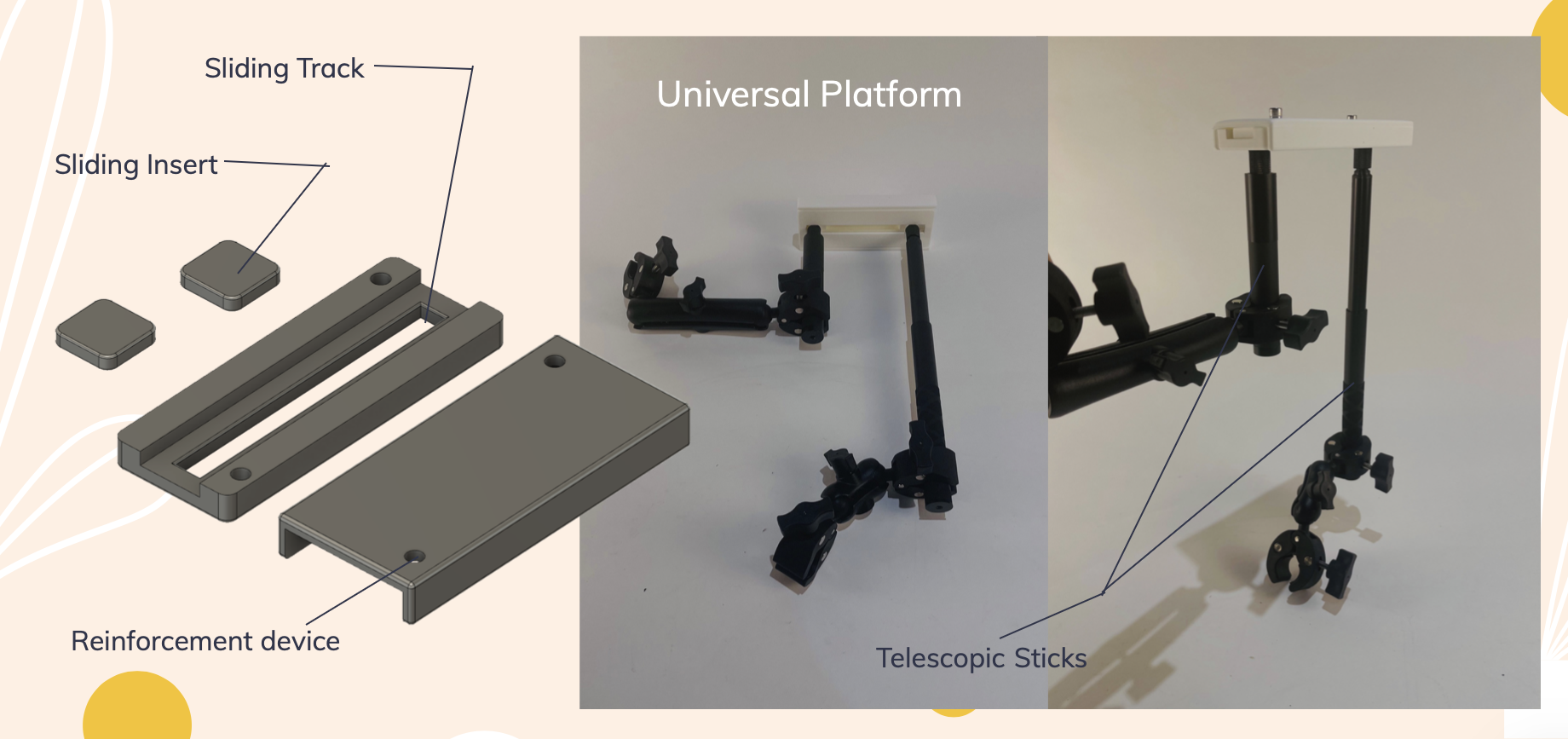In our previous work with Siyi and Michener, I have been working hard to explore more commonly used connection methods. When I was doing market research early in the morning, I discovered that there were already many accessories for electronic device stands on the market, and they were all technically very mature. However, these accessories are all designed for bicycles or other items, and there are absolutely no such accessories designed for wheelchairs. So we hope to fill this gap. The most critical point in filling this gap lies in the connection method with the wheelchair. However, this is a very big challenge. In market research, we found that every wheelchair is different, even hugely different. It is very difficult to design a universal connection method, which may be why there are no such products for wheelchairs. If you want to achieve universal adaptability, you must develop based on the common points of wheelchairs.
Therefore, I obtained a lot of information from our three Co-Designers about the wheelchairs they use, and also researched a large number of widely used wheelchairs from the market. Finally, through a long period of comparison, I found that no matter how different they are in appearance, they will always have two things in common: the wheelchair armrests and the support structure of the front wheels or pedals.

So, how to rationally utilize and combine these two parts?
I got very important inspiration from setting up selfie sticks for Michener and Siyi, and I also discovered a very useful structure, which is the double-head clip. This kind of double-head clamp designed for bicycles can set up the platform we want between the two parts. Considering the location of our project, I combined them with telescopic poles to create a platform to place our project. In fact, we can also use only a double-headed clamp to set up, but in previous practice, we felt the stability of the triangle. One double-head clamp is not enough, but two will make the entire structure more stable and reduce sway in at least one direction.
The next step is to design the platform. The simplest way is to install a board on top, and then embed two inserts in it to connect with the telescopic rods supported below. But I soon realized a potential pain point: since everyone's wheelchair is different, even with two double-headed clamps like that, it is difficult to ensure a certain distance between the two telescopic rods. Therefore, I designed a slide rail structure built into the platform. I took inspiration from the design of double-head clamps and designed the slide rails to be able to control mobility by turning screws. After loosening the screws, the two inserts in the slide rail can move freely and adjust the distance. After tightening the screws, the two inserts can be fixed.

In this way, a more universally applicable installation method is completed. We have conducted multiple rounds of testing and have received positive reviews from users.
 Junzhe Guo (Sebastian)
Junzhe Guo (Sebastian)
Discussions
Become a Hackaday.io Member
Create an account to leave a comment. Already have an account? Log In.